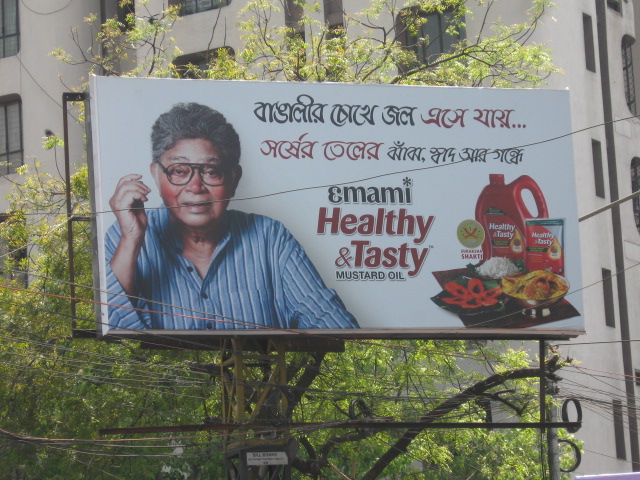BOOKS
Where: The second-hand bookshops lining College Street.
What: A Collection of Stories by Edgar Allan Poe.
condition: Mint, almost.
Cost: Rs 30
What: A Mills & Boon titled A Taste of Heaven.
condition: Much-thumbed.
Cost: Rs 20
What: A “complete and unabridged” edition of Jane Austen’s Persuasion.
condition: As good as new.
Cost: Rs 30
What: Sydney Sheldon’s The Doomsday Conspiracy.
condition: Dog-eared.
Cost: Rs 20
They Speak: “Rs 100 is a king’s ransom on College Street. Half the fun is in haggling with the shopowners to bring the ridiculously low prices further down.”
 CLOTHES What: A pair of Old Navy denim shorts.
Where: At one of the stalls outside Indian Museum.
Cost: Rs 35
What: A V-neck white cotton top.
Where: In front of the Indian Museum.
Cost: Rs 25
What: A pink printed silk scarf.
Where: Sunshine, on Sudder Street.
Cost: Rs 40
They speak: “Shopping is so much fun when an entire outfit can be assembled for just Rs 100! A little bit of patience, a keen eye to ferret out the right stuff and the dum to bargain are enough to get you going.”
Statutory warning: Wash ’em before you wear ’em.
FOOTWEAR
Where: Outside New Market.
Cost: Rs 100
They speak: “You have an array of footwear to choose from for 100 bucks. There are flats and heels, peep-toes and strappy sandals. But for summer, what better than Oshos?”
ACCESSORIES
What: Broad red hairband.
Where: Outside Sreeram Arcade.
Cost: Rs 10
What: Coconut shell neckpiece and earrings set.
Where: A Tagore mela at the Nandan complex.
Cost: Rs 30
What: Silver-coloured anklet.
Where: Beside New Market.
Cost: Rs 13
What: Funky marble-and-bead neckpiece.
Where: Grand Arcade.
Cost: Rs 30
What: Brown hair clip.
Where: Gariahat footpath.
Cost: Rs 5
What: Blue wooden bangle.
Where: Gariahat footpath.
Cost: Rs 10
What: Tiny black earrings.
Where: In front of Gariahat Market.
Cost: Rs 2
They speak: “Calcutta is a treasure trove when it comes to accessories. New Market and Gariahat are the best stops.”
ENTERTAINMENT
What: A date with history.
Where: Indian Museum.
Cost: Rs 10 (camera charges extra)
They speak: “It is a great place to spend a summer afternoon. It is really cool inside. And there’s so much to see — artefacts, fossils, insect specimens, masks and paintings. The big crowd-puller seems to be the Egyptian mummy.”
What: On the wild side.
Where: Zoological Garden (Alipore zoo).
Cost: Rs 20 (ticket) + Rs 10 (ice-cream) + Rs 5 (Frooti) + Rs 3 (150g groundnuts) + Rs 12 (mineral water) = Rs 50
They speak: “Not a good option when the sun’s blazing but on a cloudy day, ambling through the zoo’s green premises can be great fun. You might even see the peacocks dancing. It takes almost three hours to visit all the enclosures. But armed with a bottle of water and the occasional ice cream, it makes for an ideal lazy summer morning.”
What: Starry, starry day.
Where: M.P. Birla Planetarium.
Cost: Rs 30
They speak: “If you crave air-conditioned comfort, this is the place to be. The shows on planets, constellations and other celestial matters are for around 45 minutes each and are held throughout the day at regular intervals.”
What: An evening stroll or a morning walk.
Where: Victoria Memorial Hall.
Cost: Rs 10 (for entry to the grounds and museum)
They speak: “It is a beautiful place to just sit and chat or to take a walk. There is lush greenery, shaded benches and a little lake. To escape the sun and for a dose of history, step inside the museum (except Mondays). In the evenings (except Mondays), there are light-and-sound shows for Rs 20.”
FOOD What: Chicken Momo with Soup.
WHERE: Exide crossing.
Cost: Rs 12
They speak: “A yummy, healthy, low-calorie meal.”
What: Chocolate Softie.
Where: Emami Mall, Lord Sinha Road.
Cost: Rs 6
They speak: “With summer at its peak, an ice cream a day is a must. But gelatos every day would burn a hole in the pocket. The softie ice cream is cool on you and your pocket.”
What: Phuchka.
where: Opposite Azad Hind (Hindustan Park).
Cost: Eight pieces for Rs 10
They speak: “You cannot possibly walk past a phuchka stall without yielding to temptation.”
What: Mango Shake.
Where: Elgin Road.
Cost: Rs 15
They speak: “It’s the season for mangoes. When you down an original Aam Sherbet — that too chilled — the bottled mango drinks just fade into oblivion!”
What: Mutton Shammi Tikia and Lachha Paratha.
Where: Saima, behind Rabindra Sadan Metro station.
Cost: Rs 18 + Rs 7 = Rs 25
They speak: “This little place is hidden by the Metro station, but it’s a tasty and pocket-friendly find.”
What: Slush (Semi-frozen drink with added flavour).
Where: Fillers, Vivekananda Park.
Cost: Rs 15
They speak: “Why drink the regular cola every day? A glass of Slush is extremely refreshing. With a wide range of flavours, one could drink a different kind of Slush each day of the week.”
What: Ice Paan.
Where: Behind New Market, just outside Aminia.
Cost: Rs 3
They speak: “It’s cold, it’s sweet and it melts in your mouth.”
What: Egg Roll.
Where: Bedwin, Gol Park.
Cost: Rs 14
They speak: “Rolls are a classic student-favourite. It’s an eat-while-you-run meal.” | 



















